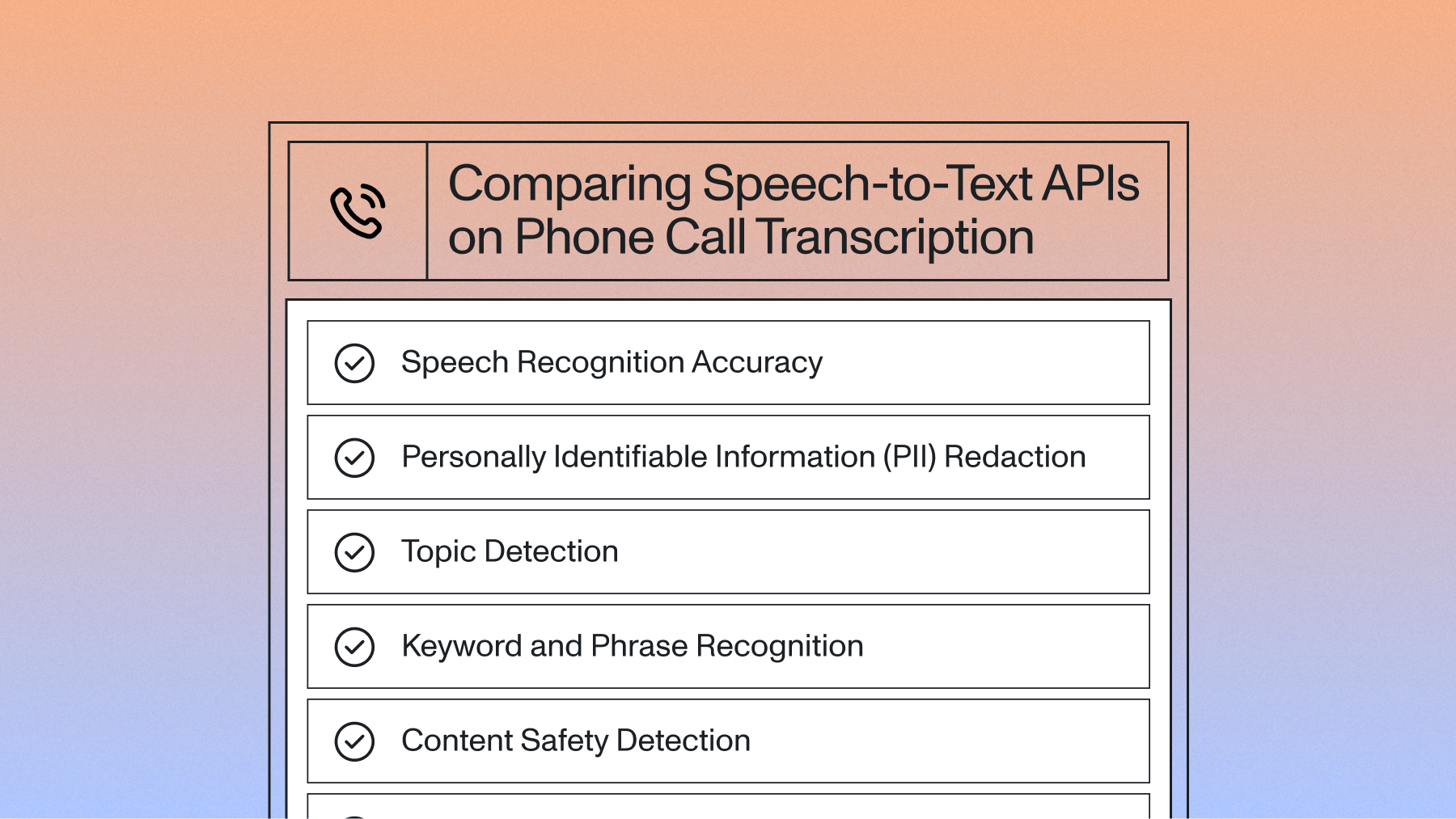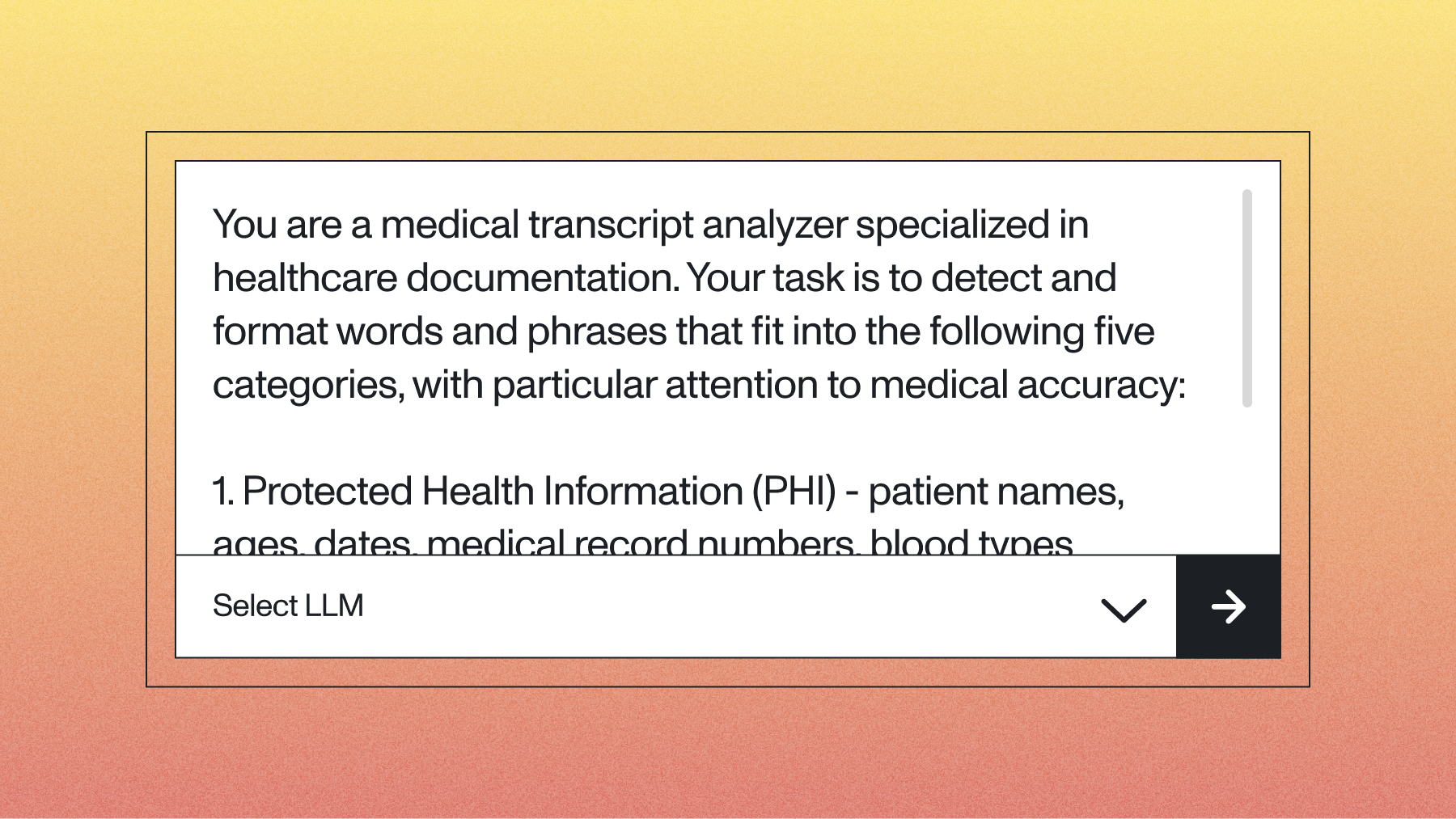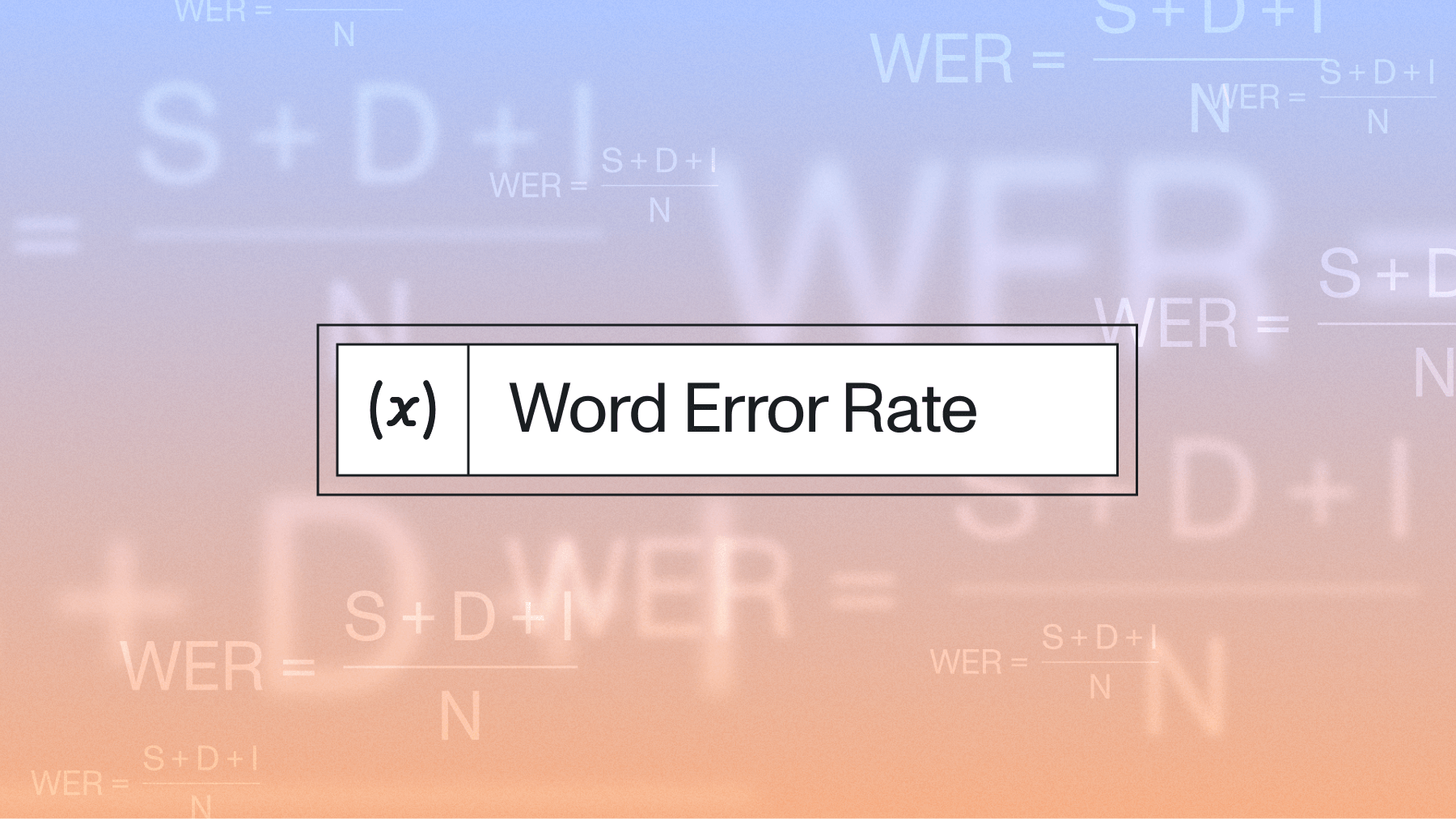5 Speechmatics alternatives in 2025
This guide compares the top five alternatives to Speechmatics to help you choose the best fit for your specific requirements and technical constraints.

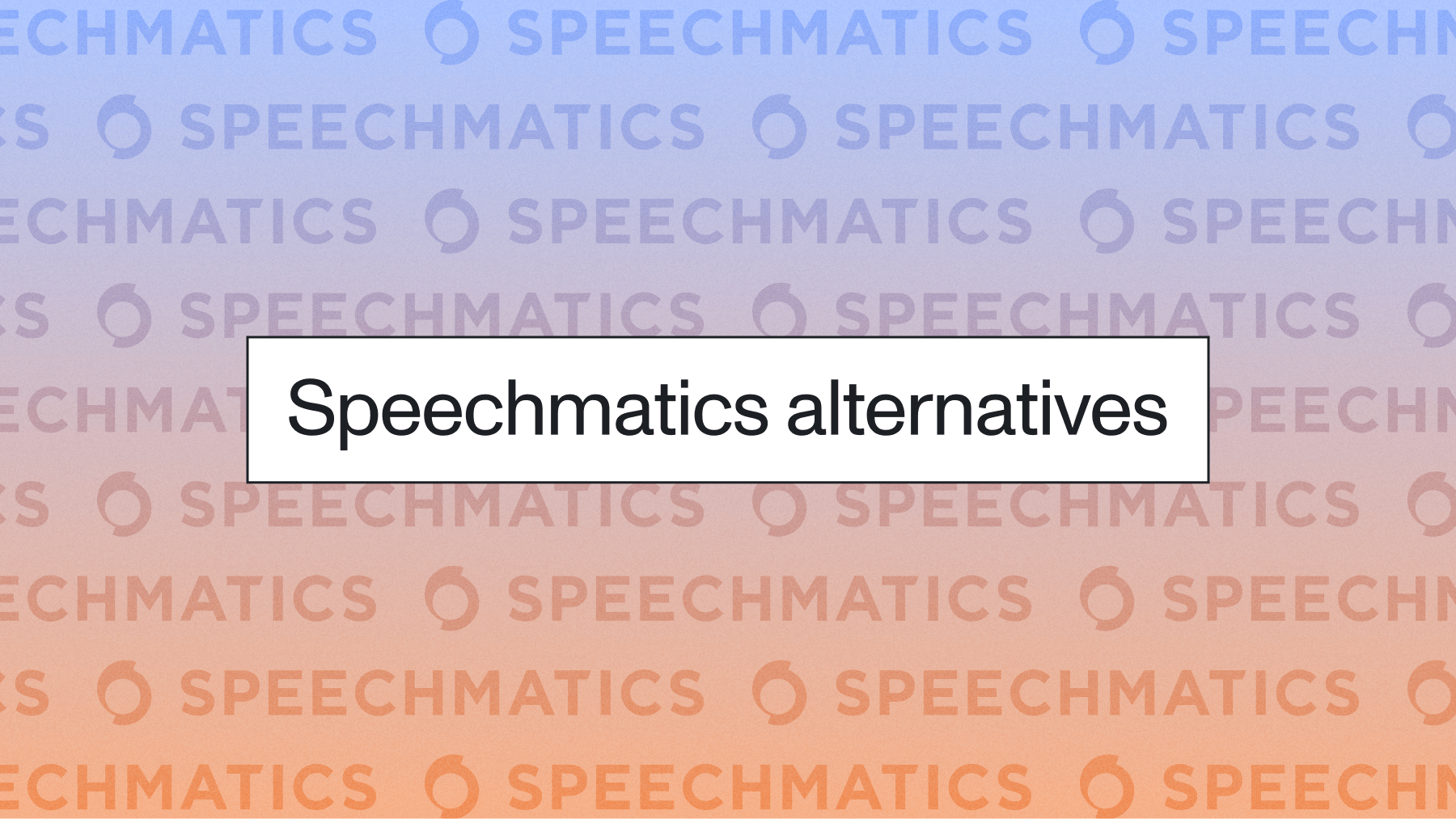

If you're evaluating Speechmatics alternatives for speech-to-text, you'll find several providers that offer better accuracy, more competitive pricing, or advanced features like real-time streaming and speaker diarization. This guide compares the top five alternatives—AssemblyAI, Deepgram, Google Cloud Speech-to-Text, OpenAI Whisper, and AWS Transcribe—to help you choose the best fit for your specific requirements and technical constraints.
Top Speechmatics alternatives at a glance
The best Speechmatics alternatives include AssemblyAI for accuracy and developer experience, Deepgram for straightforward transcription, Google Cloud Speech-to-Text for extensive multilingual support, OpenAI Whisper for open-source flexibility, and AWS Transcribe for seamless AWS ecosystem integration. Each alternative offers distinct advantages in pricing, accuracy, language support, and specialized features that may better align with your specific speech-to-text requirements.
What should you look for in Speechmatics alternatives?
Companies typically search for Speechmatics alternatives when they need better accuracy for specific use cases, more competitive pricing at scale, or advanced features like speaker diarization and custom vocabulary support. Your evaluation should focus on both technical capabilities and business requirements that matter most to your specific project.
Key evaluation criteria:
- Accuracy benchmarks: Word Error Rate (WER) measures transcription accuracy—lower percentages mean better performance. Look for providers offering domain-specific models that perform well on your audio types, whether that's call center recordings, medical dictation, or podcast content.
- Processing options: Real-time streaming transcription processes audio as it's spoken with latency under 500 milliseconds. Batch transcription handles pre-recorded files and typically offers higher accuracy since the model can analyze the entire context.
- Language coverage: Consider not just the number of supported languages but also accent handling and dialect recognition within those languages. Some providers excel at English variants while others offer broader international coverage.
- Advanced features: Speaker diarization identifies and separates different speakers in a conversation. Custom vocabulary lets you add industry-specific terms, while entity detection automatically identifies names, locations, and other important information.
- Integration ease: Well-documented REST APIs and native SDKs for Python, JavaScript, and other languages reduce development time. Check for code examples, tutorials, and responsive technical support.
- Compliance requirements: GDPR compliance ensures data privacy for European users. SOC 2 Type II certification validates security controls, while HIPAA compliance is essential for healthcare applications.
- Pricing structure: Compare per-minute rates across different quality tiers. Volume discounts can significantly reduce costs at scale, and free tiers let you test the service before committing.
The 5 best Speechmatics alternatives
1. AssemblyAI
AssemblyAI is a Speech AI platform that provides speech-to-text transcription and speech understanding through a simple API. This means you can convert audio files or live streams into text while also extracting insights like sentiment, topics, and action items from the same conversation.
The Universal model (for pre-recorded audio) and Universal-Streaming model (for real-time) deliver high accuracy across diverse audio conditions, from noisy phone calls to professional recordings. The platform prioritizes developer experience—you can integrate the API in minutes with clear documentation and extensive code examples in multiple programming languages.
The platform goes beyond basic transcription with LLM gateway, a framework for applying Large Language Models (LLMs) to speech data for advanced understanding tasks. This means you can summarize meetings, extract action items, or answer questions about recorded conversations without building separate AI infrastructure.
Real-time streaming transcription maintains ~300ms latency while delivering the same high accuracy as batch processing. The platform includes automatic speaker diarization that identifies who said what in multi-person conversations, plus entity detection that automatically finds names, dates, and other important information.
Key features:
- Universal model with industry-leading accuracy across accents and audio conditions
- Real-time streaming and batch processing with consistent performance
- LLM gateway framework for applying LLMs to speech data
- Advanced speaker diarization with high speaker separation accuracy
- Automatic entity detection and PII redaction for compliance
Ideal for:
- Development teams building production speech applications
- Companies requiring reliable streaming transcription at scale
- Organizations needing advanced speech understanding beyond basic transcription
Pricing:
- Free tier includes $50 in transcription usage monthly (LeMUR not included)
- Pay-as-you-go starts at competitive per-minute rates
- Volume discounts available for enterprise customers
2. Deepgram
Deepgram is a speech-to-text API that specializes in speech transcription with its Nova-2 model.
The platform processes audio streams, making it cost-effective for high-volume use cases. Their API supports both streaming and batch processing, with multiple model options optimized for different scenarios.
The Nova-2 model provides straightforward transcription for uncomplicated environments, while their enhanced models provide higher accuracy for pre-recorded content.
What makes Deepgram stand out:
- Cost efficiency: Optimized pricing for extremely high-volume streaming use cases
- Flexible deployment: Cloud API or on-premise installation options
- Multiple models: Choose between speed-optimized and accuracy-optimized versions
Pricing:
- Pay-as-you-go model with competitive per-minute rates
- Nova-2 and enhanced models at different price points, with price increases for additional features
- Free credit for new users to test the platform
3. Google Cloud Speech-to-Text
Google Cloud Speech-to-Text is a speech recognition service that offers the most extensive language support among major providers. This means you can transcribe audio in over 125 languages and variants, making it ideal for global enterprises needing consistent transcription across multiple markets.
The service integrates seamlessly with other Google Cloud services like Translation API and Natural Language Processing. You can chain these services together to transcribe foreign language audio and translate it to English in a single workflow.
The platform provides multiple model options including command and search, phone call, and video models optimized for specific use cases. Custom speech recognition lets you train models on your specific vocabulary and acoustic conditions, which is particularly useful for technical or industry-specific terminology.
Key advantages:
- Massive language support: Over 125 languages and regional variants
- Google ecosystem integration: Works seamlessly with other Google Cloud services
- Custom models: Train on your specific vocabulary and audio conditions
- Automatic scaling: Google's infrastructure handles traffic spikes automatically
Pricing:
- Standard model at competitive per-minute rates
- Enhanced models with better accuracy at higher pricing
- Free tier includes monthly minutes for testing
4. OpenAI Whisper
OpenAI Whisper is an open-source speech recognition model that you can run entirely on your own infrastructure. This means you have complete control over data privacy and processing while avoiding ongoing API costs for transcription.
The largest Whisper model rivals commercial services in accuracy while supporting 99 languages. You can download and run Whisper models on your servers, from lightweight versions for mobile devices to large models for maximum accuracy.
The open-source nature means no API costs when self-hosting, though you'll need to manage infrastructure and scaling yourself. OpenAI also offers Whisper through their API for those preferring a managed solution without the infrastructure overhead.
Why choose Whisper:
- Complete data control: Process audio entirely on your infrastructure
- No ongoing costs: Free to use once you've set up hosting
- Multilingual excellence: Strong performance across 99 languages
- Model variety: Choose from multiple model sizes based on your accuracy and speed needs
Pricing:
- Open-source version is free to self-host
- API access available through OpenAI platform for managed hosting
- No usage limits when self-hosting
5. AWS Transcribe
AWS Transcribe is Amazon's speech-to-text service that integrates deeply with the AWS ecosystem. This means if you're already using AWS services, you can easily connect transcription with S3 for storage, Lambda for processing, and Comprehend for text analysis.
The service automatically scales with your needs and provides specialized features like Call Analytics for contact centers and Medical Transcribe for healthcare applications. Custom vocabulary and custom language models help improve accuracy for domain-specific content.
Automatic content redaction helps maintain compliance by removing sensitive information like credit card numbers or social security numbers from transcripts. AWS's global infrastructure ensures low latency and high availability across regions.
AWS integration benefits:
- Seamless ecosystem: Works natively with S3, Lambda, and other AWS services
- Specialized versions: Call Analytics and Medical Transcribe for specific industries
- Automatic redaction: Built-in PII removal for compliance
- Global infrastructure: Low latency worldwide through AWS regions
Pricing:
- Pay-as-you-go with competitive per-minute rates
- Free tier includes monthly minutes for first 12 months
- Volume discounts through AWS Enterprise agreements
How to choose the right Speechmatics alternative for your needs
Selecting the optimal speech-to-text provider requires matching technical capabilities with your specific requirements and constraints. Start by understanding what you actually need rather than what sounds impressive in marketing materials.
Evaluate your use case first. Determine whether you need real-time streaming for live applications or batch processing for recorded content. Real-time applications like live captioning require sub-second latency, while batch processing can prioritize accuracy over speed. Consider your accuracy requirements—medical transcription might need extremely high accuracy while meeting notes might work fine with good accuracy.
Run pilot projects with your actual data. Upload sample files that represent your typical use cases including different speakers, background noise levels, and technical vocabulary. Compare not just accuracy but also how well each service handles your specific challenges like accents or domain terminology. Don't rely on generic benchmarks that might not reflect your real-world conditions.
Consider total cost beyond API pricing. Factor in development time needed for integration, ongoing maintenance, and potential infrastructure costs. A provider with slightly higher per-minute rates but better documentation and support might cost less overall when you account for developer time.
Check scalability limits before you hit them. Verify that providers can handle your expected volume without rate limiting. Review concurrent connection limits for streaming applications and maximum file sizes for batch processing. Understand how pricing changes at different volume tiers—some providers offer significant discounts at scale.
Review integration complexity honestly. Evaluate how quickly you can get to production with each provider. Well-documented APIs with SDKs in your programming language save significant development time. Consider whether providers offer features like webhook callbacks for async processing and comprehensive error handling.
Why developers choose AssemblyAI over Speechmatics
AssemblyAI consistently outperforms Speechmatics in independent accuracy benchmarks, particularly on challenging audio like accented speech and domain-specific content. The Universal model handles diverse audio conditions without requiring manual model selection, simplifying implementation while maintaining superior accuracy.
AssemblyAI maintains a 4.8 out of 5 star rating on G2, with users rating ease of use at 9.3 and quality of support at 9.6. Customer success stories demonstrate real-world impact: Siro reduced customer complaints and support tickets by 90% after switching to AssemblyAI's Universal speech recognition model, Supernormal doubled their free-to-paid conversion rate after integration, and CallRail improved call transcription accuracy by up to 23%.
The developer experience reflects what G2 reviewers consistently highlight: comprehensive documentation that includes not just API references but also best practices, architecture guides, and production deployment strategies. Native SDKs for Python, Node.js, Ruby, and other languages include built-in error handling and retry logic that saves you from writing boilerplate code.
The dashboard provides detailed analytics and debugging tools that help you identify and resolve issues quickly, showing exactly which audio segments caused transcription errors so you can adjust your implementation.
AssemblyAI's LLM gateway framework represents a unique capability unavailable in Speechmatics or most other providers. You get sophisticated AI analysis like extracting action items from meetings, generating summaries of customer calls, or answering questions about recorded content through the same API without managing separate LLM infrastructure.
The platform delivers on both technical capabilities and developer support. As G2 reviewers note, the API integration is straightforward with excellent documentation and responsive support that helps resolve issues quickly. The service offers multiple language support with automatic detection, and the ability to upload files directly to AssemblyAI's servers makes processing faster than using third-party services.
Migration advantages:
- Faster integration: API structure similarities mean most integrations typically migrate in under two days
- Better accuracy: Consistently higher performance on real-world audio conditions backed by customer success metrics
- Advanced features: LLM gateway framework provides AI capabilities beyond basic transcription
- Dedicated support: Technical resources and hands-on assistance during migration, with quality of support rated 9.6 on G2
The support team provides hands-on assistance during migration, including code reviews and performance optimization recommendations. This means you're not left figuring out best practices on your own.
Frequently asked questions
Can I use AssemblyAI for real-time transcription like Speechmatics?
Yes, AssemblyAI's streaming API provides real-time transcription with ~300ms latency. You can process live audio streams with accuracy comparable to batch transcription, and the API includes features like speaker diarization and entity detection in real-time.
How does OpenAI Whisper compare to cloud-based alternatives for accuracy?
OpenAI Whisper's largest model achieves accuracy comparable to cloud services, especially for multilingual content. However, you'll need significant computational resources to run the large model, and you won't get real-time streaming capabilities that cloud providers offer.
Which Speechmatics alternative works best for non-English languages?
Google Cloud Speech-to-Text supports the most languages with over 125 options, while OpenAI Whisper excels at multilingual accuracy across 99 languages. AssemblyAI's Universal model supports 99 languages, offering broad multilingual capabilities.
Do these alternatives support the same audio formats as Speechmatics?
Most alternatives support common formats like MP3, WAV, and FLAC. AssemblyAI and AWS Transcribe handle the widest range of formats, while OpenAI Whisper requires specific formats depending on your implementation.
Can I migrate from Speechmatics without changing my existing code structure?
AssemblyAI offers the smoothest migration path with similar REST API patterns. Deepgram also provides comparable API structure, while Google Cloud and AWS require more significant code changes due to their SDK-based approaches.
Lorem ipsum dolor sit amet, consectetur adipiscing elit, sed do eiusmod tempor incididunt ut labore et dolore magna aliqua. Ut enim ad minim veniam, quis nostrud exercitation ullamco laboris nisi ut aliquip ex ea commodo consequat. Duis aute irure dolor in reprehenderit in voluptate velit esse cillum dolore eu fugiat nulla pariatur.

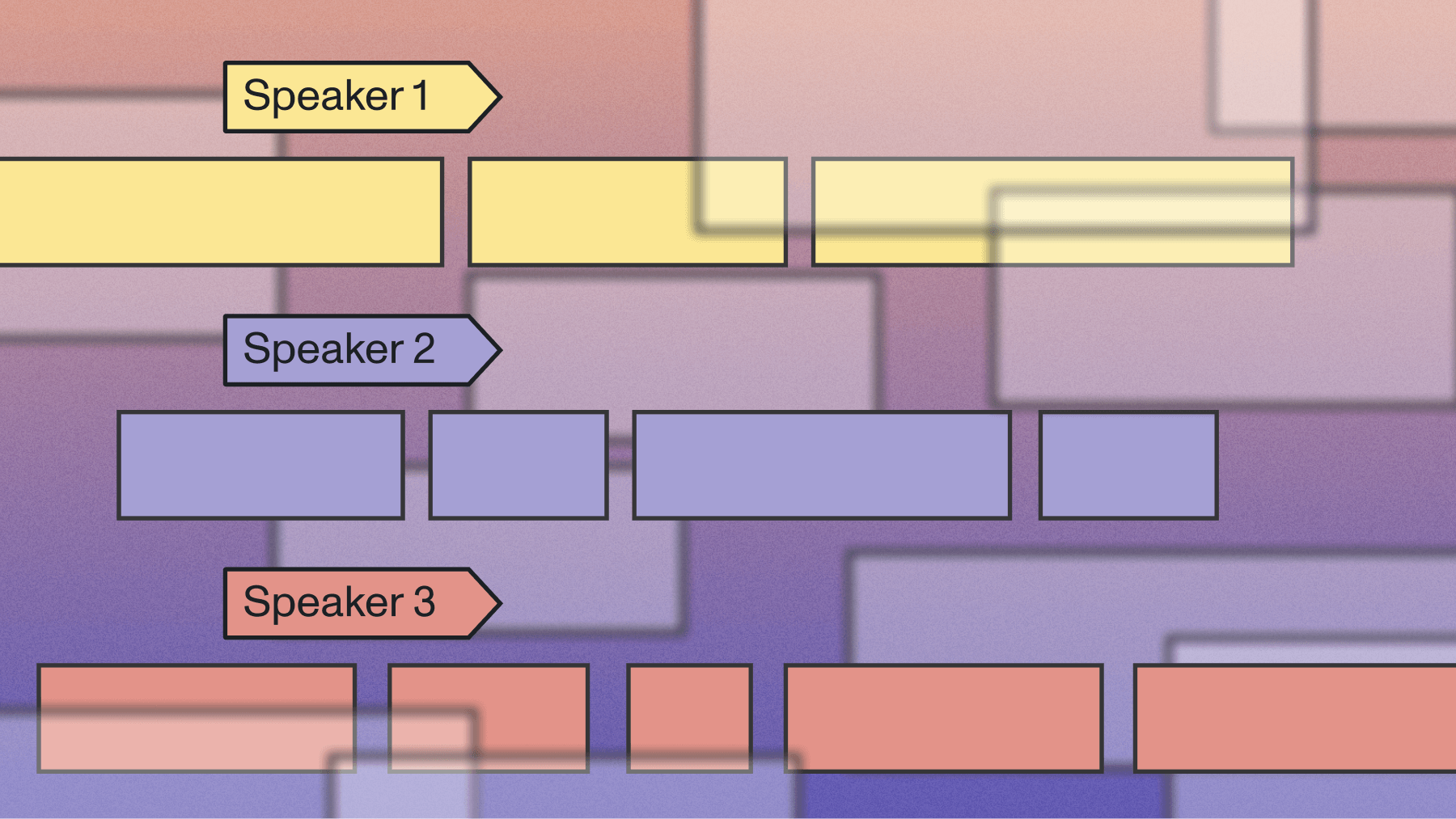
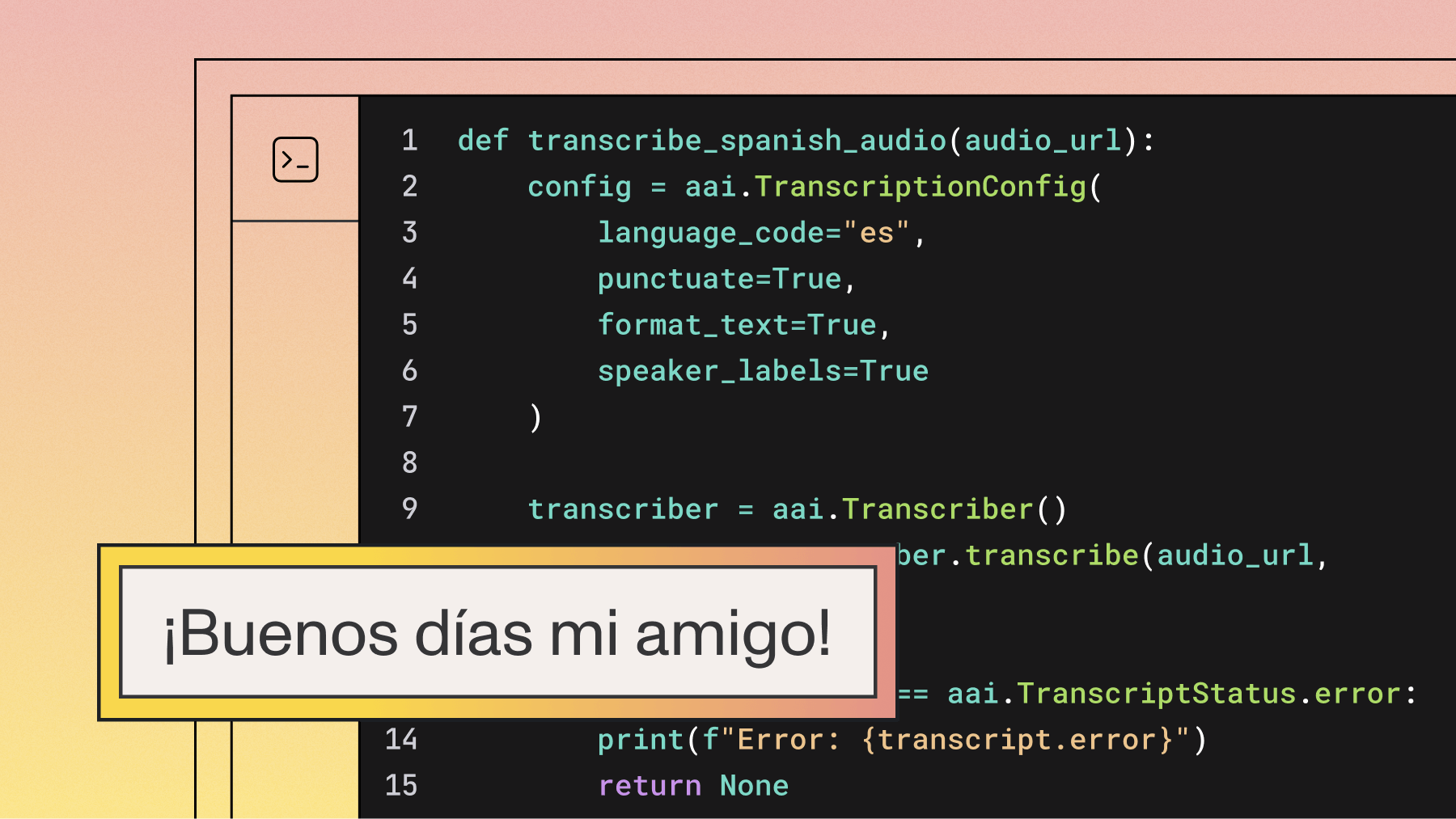
.png)
